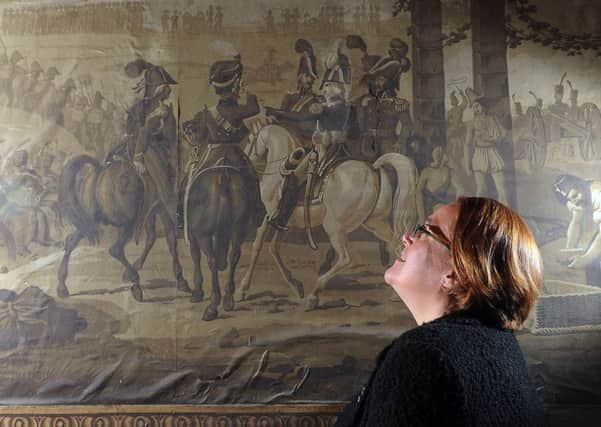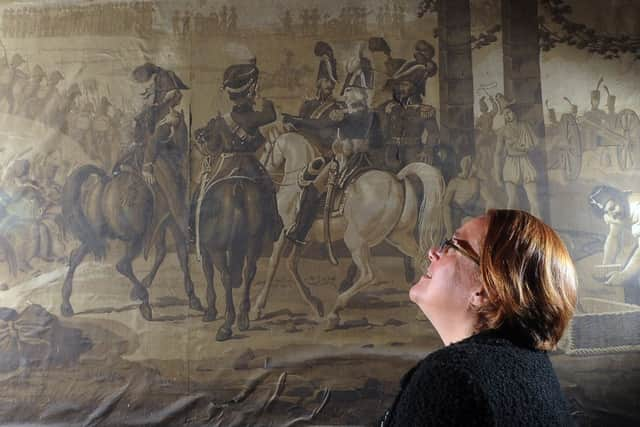Video: Napoleonic art unearthed in York


The intricately hand-drawn Napoleonic panels from the 19th century would have originally been designed as elaborate wallpapers designed to hang in the grandest of houses but they later fell into the hands of museum bosses in York.
They were part of an original display at the museum but hidden behind boarding and display cases in a refurbishment in the 1940s or 1950s and have now been revealed at York Castle Museum after being hidden for more than 50 years.
Advertisement
Hide AdAdvertisement
Hide AdAlison Bodley, curator of history, said: “It is brilliant to see these scenes which for so long have been hidden from view.


“We had known about most of them through some photographs from the 1940s or 50s, but others were a complete surprise.”
The panels came to light when museum staff started stripping out the Civil War Gallery in the Debtor’s Prison side of the museum as part of a £1.7m development.
Most of the scenes were known about to the current curators, but some of them were not documented.
Advertisement
Hide AdAdvertisement
Hide AdMrs Bodley, added: “They are fantastic pieces of art in their own right and we will now make sure they are on public display when we finish the development in June 2014.
“You probably would find wallpaper like this in plush stately homes, its very unusual to find it in this context or within the home that it came from so yes its quite rare, quite unusual, I think that there are similar stuff at the Victoria and Albert Museum in London.”
The wallpaper scenes were originally found hung on a staircase within a building known as Cromwell House, on Ogleforth, York. In the 19th century the building was used as the premises for John Sanderson Paper Stainer and Manufacturer and previously Henry Cobb, who was in same trade.
They were acquired by museum bosses in 1936 and first shown in York Art Gallery, but by 1941 they were moved to York Castle Museum. At some point they were transferred to the second floor of the Debtors’ Prison and were boarded up.
Advertisement
Hide AdAdvertisement
Hide AdOriginally the scenes would have been intended to be used as elaborate wallpaper and appear to represent Napoleon at the Battle of Arcole, a scene at Rome and the taking of Naples in 1799.
They were part of a wall hanging comprising 30 pieces that was described as ‘Les Campagnes des Armees Francaise en Italie’ and was the work of designer Amable Leroy and printed by Dufour et Leroy, in France, in 1829.
Mrs Bodley said the wallpaper scenes were mostly in black and white, although there was some colour in the borders. She said the scenes unveiled were largely in a good condition.
Earlier this year it was revealed that a major exhibition on the First World War is set to take place at the museum after it secured £1.7m from lottery bosses.
Advertisement
Hide AdAdvertisement
Hide AdThe grant from the Heritage Lottery Fund will provide the majority of cash for the project, designed to mark the centenary of the war, and will take place in large new exhibition spaces on the first floor, with all office space moving to the second floor.
The scenes will now be protected while the work is carried out before being included in the new look spaces which will open in June 2014.
The public are invited to attend behind the scenes tours of the Debtors Prison, to see the development work and to hear about the history of the building and plans for the new exhibition: 1914: When the World Changed Forever. These are taking place on Saturday November 9 at 10am, 11am, 12pm, 2pm, 3pm and 4pm. To book please email [email protected] or phone 01904 687672.
The exhibition will take visitors from the recruitment office to the horrors of the frontline - from the cultural revolution happening at home to the thousands of men defending countries they had never stepped foot in.